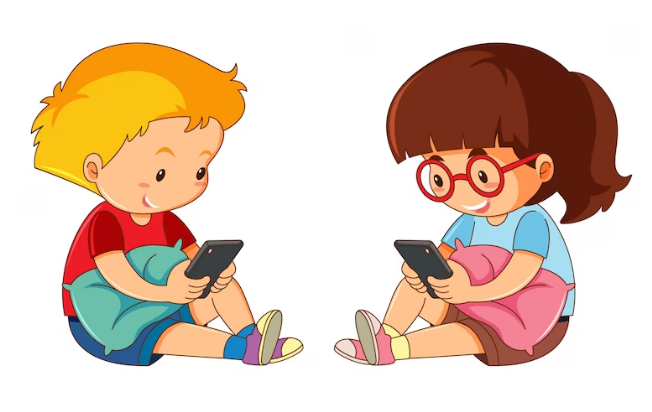Kids Art: 5 Amazing Watercolor Techniques for Beginners
Watercolor painting is a wonderful medium for kids to explore their creativity and express themselves through art. It allows them to experiment with colors, textures, and various techniques.
As a beginner, starting with watercolors can be both exciting and rewarding. In this article, we will explore five watercolor painting techniques that are perfect for kids to begin their artistic journey.
1- Wet on Wet Technique
The wet-on-wet technique is the foundation of watercolor painting and a great starting point for kids. It involves applying watercolors onto wet paper, allowing the colors to mix and blend naturally, creating beautiful, unique patterns. Younger kids can easily try this technique, making it a perfect introduction to watercolor painting.
To start, mix your desired paint colors in a palette and test their intensity on a scrap piece of paper. Using a flat brush, paint clean water over the entire paper. The paper should be wet but not overly soaked; you can use paper towels to dab away excess water if needed. Now, begin painting your paper using one color at a time.
Kids can experiment with different brushstrokes, such as dabbing or long strokes. Encourage them to wash their brush between colors. As the paper dries, the colors will naturally blend, resulting in beautiful watercolor effects. If you want to speed up the drying process, use a hairdryer on a low setting.

Mental Math App for Kids
The mental math games are all about the ability of thinking and solving a problem in your head. It builds that critical thinking in a child’s mind and makes him able to deduce solutions to different problems.
2- Spatter or Splatter Painting Technique
Spatter painting, also known as splatter painting, is an incredibly fun and creative watercolor technique for kids. It adds interest and texture to any art project and allows kids to explore their imagination freely. There are no rules when it comes to spatter paint, and you can use one or multiple colors depending on your preference.
To get started, choose a watercolor project where you want to add spatter painting. It could be a painting with the wet-on-wet technique or even just a plain piece of watercolor paper. Mix your colors on the darker side to achieve a more pronounced effect. For instance, you can use dark green and gold colors.
Spatter painting can be done on both wet and dry paper, each offering a different effect. When painting on wet paper, the paint will soak in more and spread, creating a softer look. Hold your paintbrush in one hand, and with your other hand, tap your paintbrush across the paper to create a spatter effect. Add more paint to the brush and continue until you are satisfied with the result.
3- Salt Texture Technique
Adding salt to your wet watercolors creates a captivating texture that kids will love to explore. Sprinkle table salt over a wet paint area, and as it dries, the salt will absorb the paint and form beautiful, unique patterns.
This technique is excellent for creating stars or fairy dust in a night sky painting or adding interest to various backgrounds. Small techniques like these can make a huge difference in your kid's coloring skills.
If you think that your kid faces problems with easy techniques like these as well then they should get online watercolor classes for beginners first. After they learn the basics, the kids will be able to use these techniques better.
4- Plastic Wrap Texture Technique
Plastic wrap is another fantastic tool to add texture to watercolor paintings. There are two ways to use plastic wrap for this technique.
For a subtle texture, crinkle up the plastic wrap and dab it gently on wet paint. Remove the plastic wrap quickly before the paint dries to achieve a soft, textured effect.
For a bolder look, crinkle up the plastic wrap and lay it on your painted area. Allow the paint to dry completely before removing the plastic wrap. This will result in a beautifully random and eye-catching pattern.
5- Sticker Resist Watercolor Technique
Sticker resist is an engaging watercolor technique that involves using stickers to create interesting shapes and designs. Kids can use simple silhouette shapes for this technique, making it easy to achieve impressive results.
To begin, gather your stickers, watercolor paper, and paints. Place the stickers firmly on the paper to form the desired design. Then, apply watercolors to the paper using your preferred technique, such as wet on wet with multiple colors.
Once the painting is complete, let it dry completely before removing the stickers, revealing the stunning design underneath.
Wrap Up
Watercolor painting offers an exciting and enjoyable way for kids to unleash their creativity. The five techniques mentioned above—wet on wet, spatter painting, salt texture, plastic wrap texture, and sticker resist—provide an excellent starting point for young beginners to explore and experiment with watercolors. Encourage kids to embrace their artistic instincts, try different color combinations, and have fun while creating their own masterpieces. Watercolor painting is a beautiful journey of self-expression, and with these techniques, kids can embark on a colorful adventure of artistic exploration.
FAQs
-
What age group is suitable for these watercolor techniques?
These watercolor techniques are designed for kids aged 6 and above, making them perfect for young beginners.
-
Can I use regular printer paper for watercolor projects?
While it's best to use watercolor paper, you can try thicker mixed-media paper or cardstock for basic projects.
-
Are these techniques safe for children?
All techniques use non-toxic and child-friendly materials, ensuring a safe and enjoyable painting experience.
-
Do I need to have prior painting experience to try these techniques?
No prior experience is necessary. These techniques are beginner-friendly and designed to encourage creativity and experimentation.
-
Can adults participate and enjoy these watercolor activities with their kids?
Absolutely! These watercolor techniques are fun for all ages and make for great bonding experiences between kids and adults.









